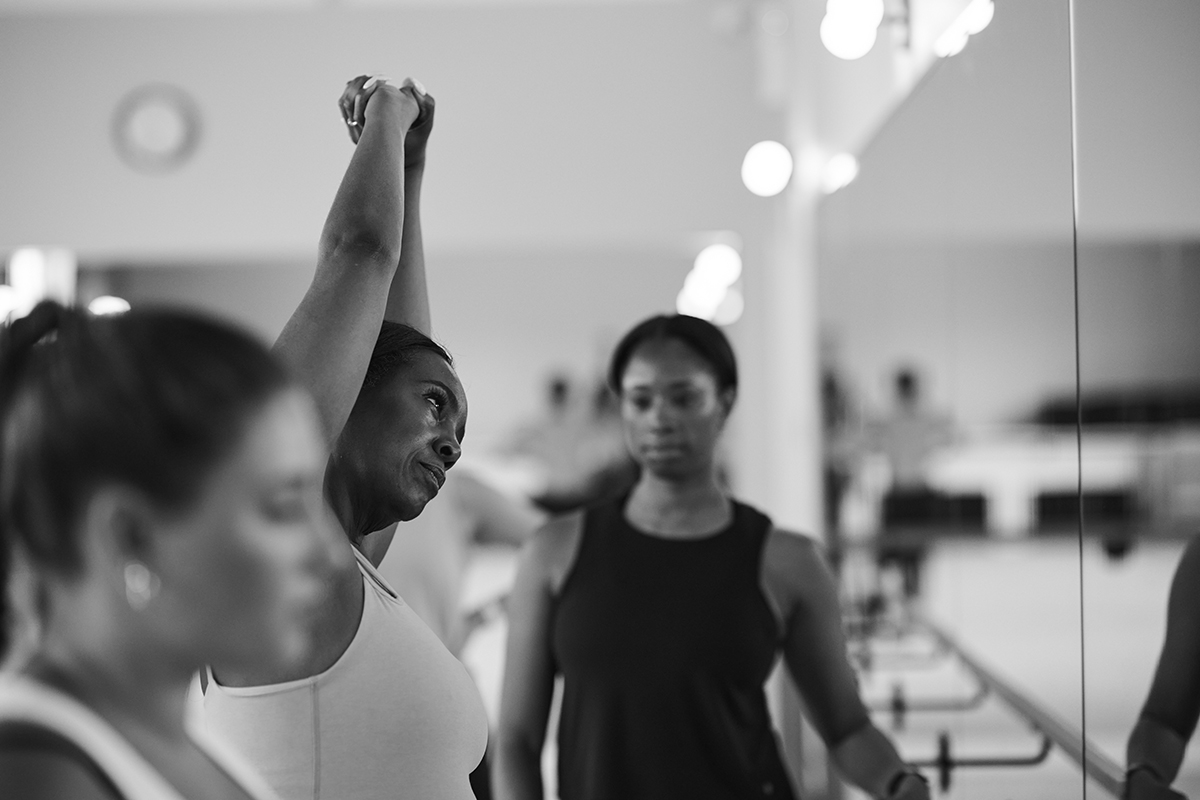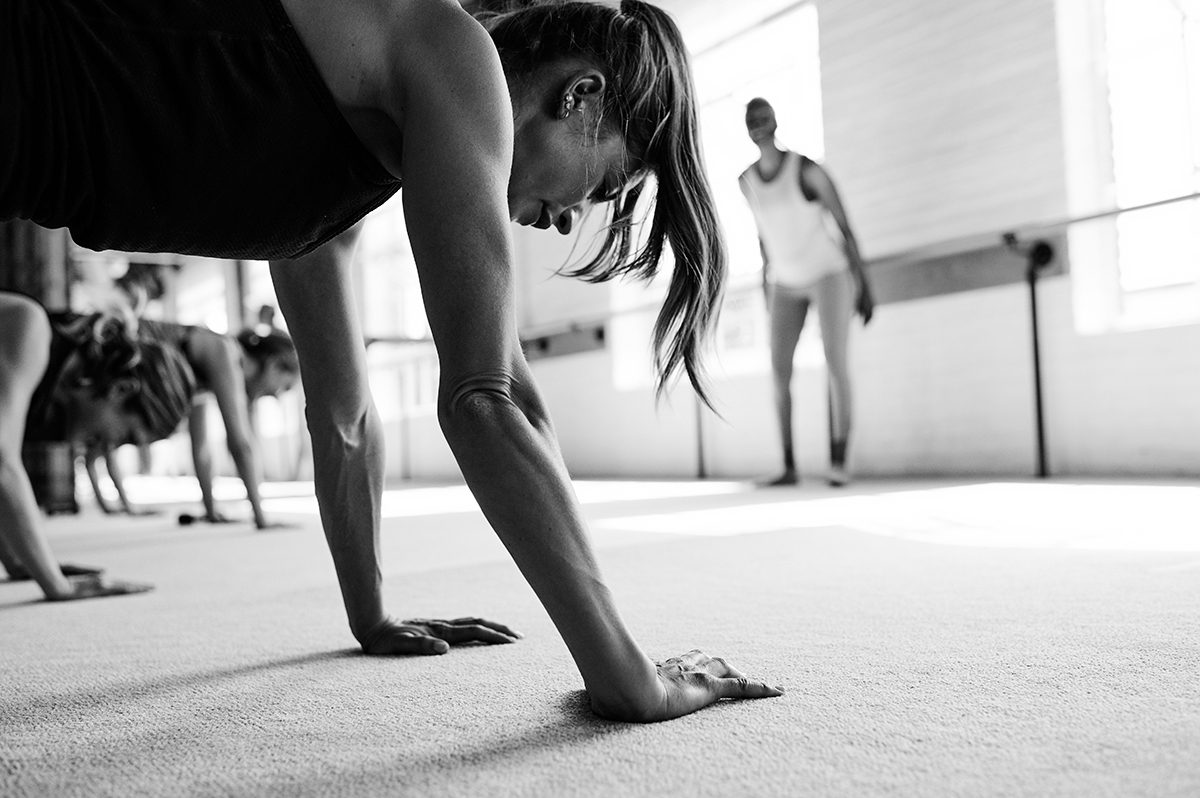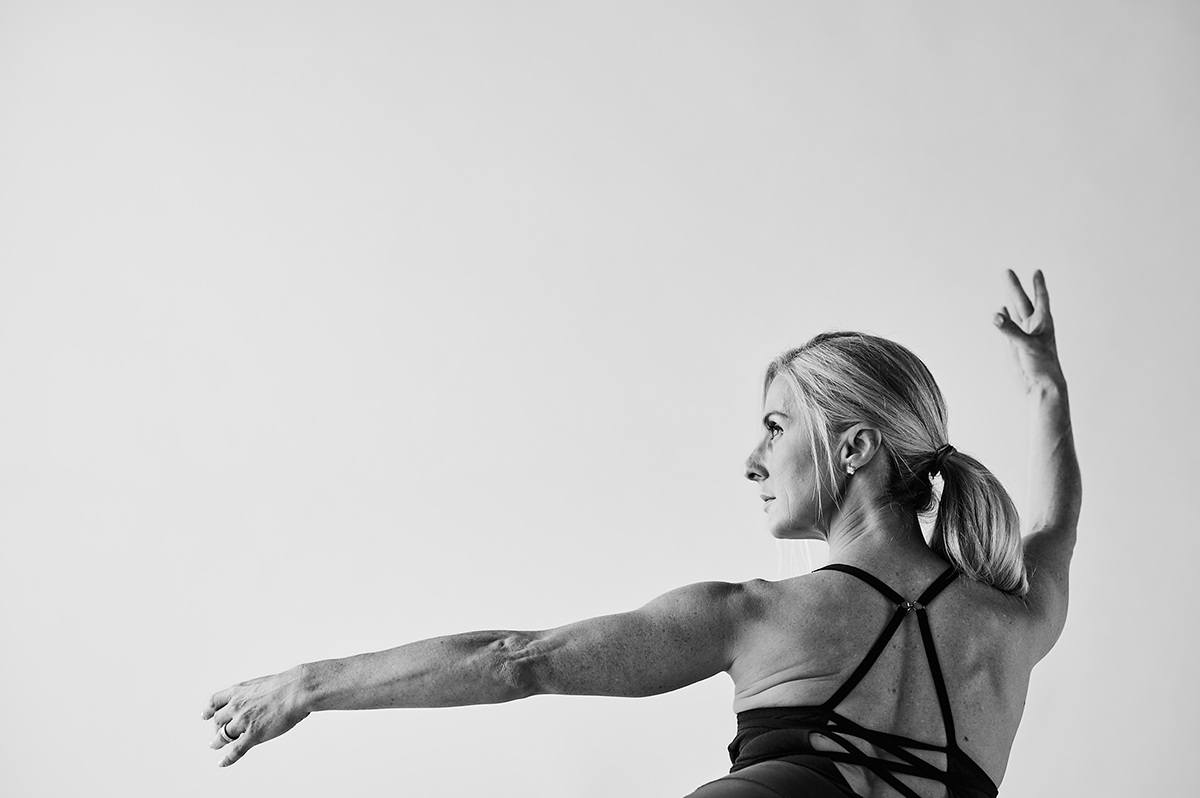New clients! For a limited time, Get 13 Classes for $78 (only $6 per class)
9 Rehabilitation Benefits of The Bar Method
According to the U.S. Department of Health and Human Services, approximately 8.6 million sports injuries occur every year — the most prevalent types being sprains, strains and fractures. Fortunately, barre workouts help combat injuries by strengthening both large and small muscle groups while increasing flexibility and balance. Barre is also an ideal form of exercise during the rehabilitation process thanks to its low-impact movements and modifications that are designed to suit your body.
Whether you’re nursing an existing injury or focusing on prevention, we’ve rounded up some of the most compelling reasons to incorporate The Bar Method’s physical therapy exercises into your overall routine.
The Bar Method: Barre Meets Physical Therapy
For more than a decade, The Bar Method has worked with physical therapists to modify its low-impact exercises for students nursing injuries. This long-standing practice of collaborating with medical professionals has helped The Bar Method evolve as close as possible into a form of physical therapy. These experts have helped formulate low-impact exercises that can help you safely rehabilitate injured muscles and joints.
While you can find rehabilitation exercises in a variety of fitness programs, The Bar Method’s low-impact workout is especially methodical in its efforts to incorporate physical therapy exercises for a wider range of benefits.

9 Reasons The Bar Method Can Help With Physical Rehabilitation
1. The Bar Method incorporates non-impact strengthening.
When you’re injured, the last thing you want to do is jump around during an exercise class. Low-impact workout routines like Pilates, yoga and Tai Chi are all good options that go easy on your joints, but The Bar Method goes further than other systems by building more strength — and in turn more stability — to your recovering muscles.
As our National Coach and Physical Therapy Consultant Kerrisa Smith–Manheimer explains, “Low-impact exercises can oftentimes be mistaken as easy or less effective. However, anyone who has taken a Bar Method class knows that is not the case! Low-impact exercises don’t equal low intensity. Instead, low-impact exercises provide a viable fitness option for a larger amount of the population, because they provide decreased stress on joints and decreased risk for injury — all while challenging your strength, increasing endurance and improving flexibility.”
2. The Bar Method offers gentle, controlled back stretching.
Each year, 50% of working Americans suffer from back pain. Because stiff backs get tweaked more easily than supple ones, stretching reduces the likelihood that the problem will occur in the first place. More immediately, stretching can reduce or eliminate ongoing back pain. The Bar Method has its origins in rehabilitative back therapy and continues to be geared toward helping students’ backs. Its deepest back stretches occur later in class when the back is fully warmed up, and it includes less twisting than yoga and Pilates, which is one reason some yoga students with injuries switch to our more orthopedically-oriented low-impact workout classes.
3. The Bar Method helps strengthen your core.
One common cause of back pain is core weakness. Pilates classes and ab workouts will definitely blast your core — if by “core”, you mean abs alone. But The Bar Method considers the glutes and upper back muscles an inseparable part of your core and works them with equal vigor. Our program also combines low-impact exercises and core training with body kinetics by working your stabilizer muscles against those in your limbs and throwing in a few balances just when you’re least expecting them. These added elements enhance core function by allowing the core to practice “turning itself on” when needed during a variety of movements.
4. The Bar Method emphasizes precision.
People often get injured in the first place because their body movement gets careless. Any low-impact workout program worth its salt will address this tendency by urging you to perform its exercises with good form. The Bar Method is famous for coaching its students on precise coordination. Paying attention to proper form makes your physical therapy exercises all the more effective.
5. The Bar Method improves balance.
Being accident-prone is usually a result of an out-of-balance musculature. The Bar Method stands alone in its mission to re-activate muscles that have gotten lazy (e.g., your glutes and inner thighs). By re-engaging these muscle groups, you’ll gradually improve your balance — therefore guarding against future accidents and potential injuries.
6. The Bar Method addresses alignment.
Bad posture can have a corrosive effect that can result in injuries over time. One problem with seeking to improve your posture by taking Pilates or by using equipment is that you rarely get to stand upright and work against gravity in those systems. The Bar Method, however, keeps you upright and square-shouldered for most of the class, thereby training your body to keep itself that way in and out of class.
7. The Bar Method uses range-of-motion physical therapy exercises.
After an injury, the first thing to address is your range of motion. Muscles that are healing tend to knit themselves together more tightly than before the injury in order to guard against getting re-injured. One of the first things physical therapists check their patients for is loss of flexibility. More than any other physical movement system outside of a clinic, The Bar Method acts gently and methodically to restore your range of motion. Students begin with shoulder work and proceed through each major muscle group, taking their joints from one end of their range to the other. These low-impact exercises help keep joints balanced by alternating between the front and backsides of the body. This progressive technique gently restores flexibility and oftentimes improves it.
8. The Bar Method incorporates the ballet barre as a useful rehabilitation tool.
The second aim of physical therapy is generally to restore kinetic acuity. Just look around a physical therapist’s clinic and you’ll see balance balls and wobble boards. These and other rehab gear are used by physical therapists to restore patients’ coordination. In place of such equipment, The Bar Method uses the ballet barre. The barre’s advantages are that injured students can work on their strength while fully stabilized, and they can pace themselves throughout the workout by using the barre more or less as needed.
9. The Bar Method can be modified to your specific needs.
The Bar Method is not one technique but two. Inside the first one, there’s a whole other set of physical therapy exercises for students with delicate joints. Teachers lead both classes at the same time by guiding their injured students through the modifications that have been set up for each exercise. And don’t worry: Your condition won’t slip through the cracks. Bar Method front desk managers ask you about any injuries, then pass this information onto your instructor. During class, you can then choose whether or not you want to take the options your instructor suggests for you. With this system in place, you don’t have to risk overdoing it. The modifications are there like a good set of training wheels that you can throw off when your muscles are good and ready to go full-speed ahead.
At The Bar Method, our low-impact workout is developed with physical therapists and can be modified according to injury — which makes it a particularly great way to get back into fitness while healing from an injury or recovering from a surgery. Ready to try our rehabilitation exercises for yourself? Let us help locate a studio near you, or sign up for online classes for a low-impact workout at home.



